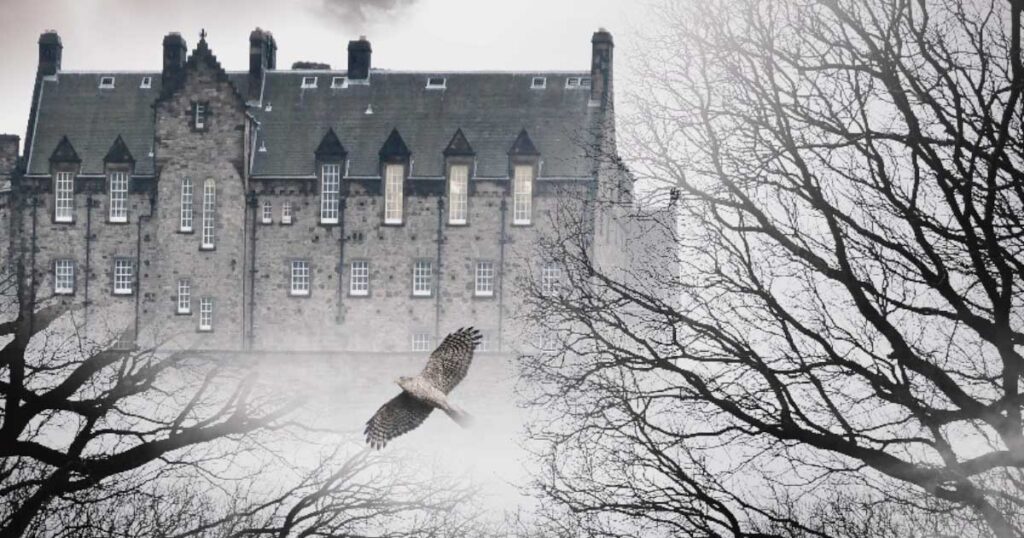
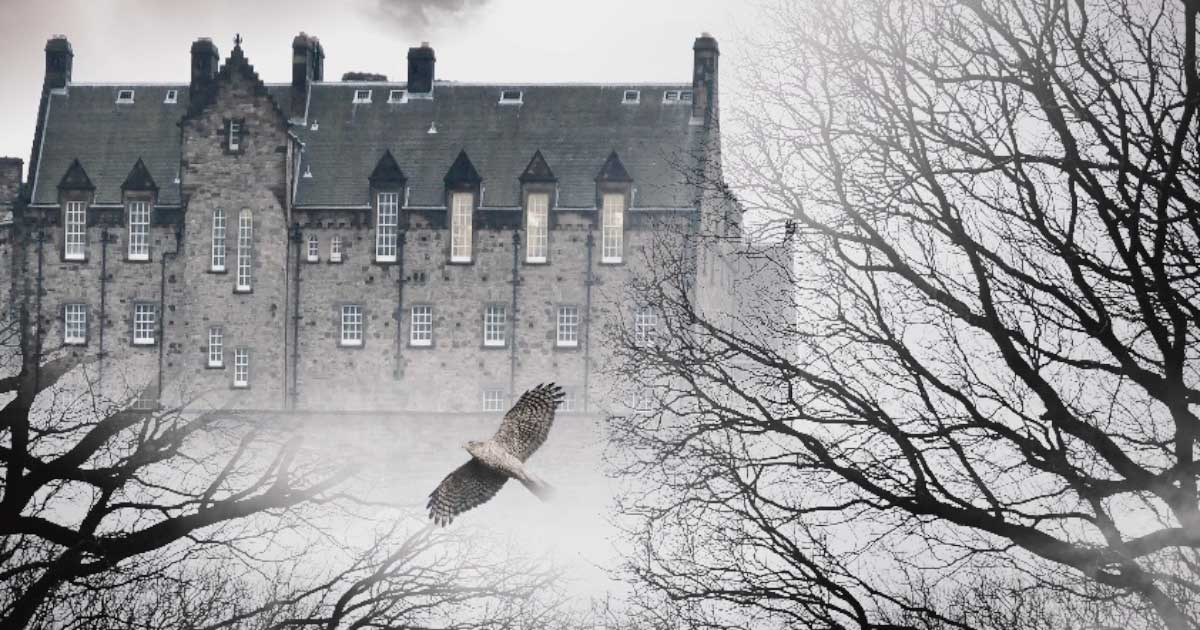
Who doesn’t love a good ghost story? Historic monuments throughout the globe are said to be home to ghostly goings-on. Travel to any city in the world and you’re likely to find haunted landmarks and the ghost tours that go with them. Whether or not you’re a believer, the history behind these ghostly sightings is often fascinating; tales of bloody battles, political executions, and brutal murders abound. Here are seven of the most haunted places in the world, and the ghost stories that go with them.
1. The Violent History of Edinburgh Castle
The more one reads about Edinburgh Castle, the less surprising it becomes that it is reportedly one of the most haunted places on the planet. Built by King David I during the 12th century, the castle has been attacked twenty three times, which means lots of people have died there.
Unsurprisingly, all this bloodshed has led to a lot of ghost stories. One of the most famous is the tale of the lost piper. Hundreds of years ago, a network of tunnels was discovered under the castle. Since no one knew where they led, it was decided it was probably a good idea to explore them.
A piper was sent in and ordered to try and work his way through the tunnels. He was told to play his bagpipes as he explored so that those on the surface could keep track of his location. Mysteriously, when the piper was around halfway between the tunnel entrance and the castle, his music stopped abruptly.
A rescue team was sent in, but the piper was never found. To this day, if one listens carefully when the traffic noise outside the castle dies down, it is said you can still hear the lost piper piping somewhere below ground.
Edinburgh Castle is the place to be if you enjoy ghostly music. Another well-known ghost story revolving around the castle is that of a ghostly drummer. In times gone by, armies were usually accompanied by drummers whose tempo led the march. For hundreds of years, it was said that Edinburgh Castle was haunted by a headless drummer. This ghostly apparition would walk the castle’s battlements playing the drums. It was believed the call of his drums was the harbinger of yet another attack.
The castle’s most recent ghost story occurred in 2003. Members of a construction crew doing restoration work complained of being harassed by ghosts. These ghosts were believed to be the ghosts of prisoners kept at the castle during the Napoleonic wars. Photos of the workers show strange blue orbs floating above the worker’s heads.

Many people have reported ghosts roaming the Gettysburg Battlefield, another haunted monument to the dead. Panorama from Little Round Top of Civil War battlefield with statue of General Warren (Gary Saxe / Adobe Stock)
2. Gettysburg Battlefield: Ghostly Soldiers and Tortured Orphans
Unsurprisingly, the sites of large battles tend to attract ghost stories. The worse the bloodshed, the more ghost stories one tends to hear. One of the bloodiest battles of the American Civil War was the Battle of Gettysburg. Fought from July 1-3, 1863, it is estimated there were between 46,000 and 51,000 casualties.
Today, many people believe the fields the battle was fought on are still haunted. There have been various reports of people spotting the ghosts of young men wandering the old battlefield searching for their lost rifles and lost comrades.
One particularly haunted location in the area is the National Homestead at Gettysburg, formerly known as the Soldier’s Orphanage. It was built to house the children orphaned by the war but has a dark history. Its second headmistress, Rosa J. Carmichael, was a cruel disciplinarian who built a dungeon in the basement for “disciplining” unruly children. This basement has become the site of several hauntings, leaving many modern psychics too afraid to enter.
Also in the area is the Herr Tavern. The tavern was built in 1815 and acted as a Confederate hospital during the war. Supposedly, so many amputations were carried out there that it was routine for severed limbs to be thrown out of the window. Many of the patients were said to have died there, and four of its rooms in particular are said to be haunted.
Today, several tour companies specialize in ghost tours of the old Gettysburg Battlefield. A video recorded in 2001 that reportedly caught the ghosts of soldiers crossing a field saw a surge in supernatural tourism in the area.
3. Tower of London: A Hotspot for Famous Ghosts
Work on the Tower of London first began in 1066 as part of the Norman Conquest. In 1078, William Conqueror added the White Tower (which the site is named after), and the site saw several expansions over the next few centuries. From 1100 to as recently as 1952, the tower acted as a prison, used to hold political prisoners and execute them.
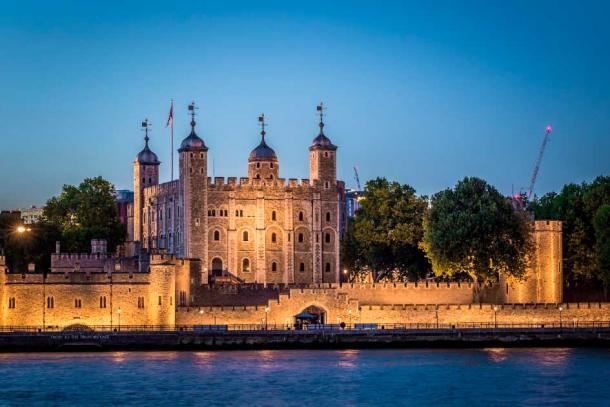
Like other reportedly haunted monuments, the Tower of London has a long, sad history of violence and death. (Rpbmedia / Adobe Stock)
Not only is the Tower of London one of the most haunted monuments in the world, but most of its ghosts are also famous. The first of these famous hauntings was in the 13th century, when the ghost of Thomas Beckett (who fell out with King Henry II and was murdered in 1170) was reportedly spotted wandering the tower’s grounds by a guard. Quite why Beckett, who was killed at Canterbury Cathedral, would be haunting the Tower of London is unknown.
Other famous ghosts spotted at the tower include Anne Boleyn, Henry VIII’s wife, who was beheaded there in 1536, and Lady Jane Gray who was executed there in 1554. Anne Boleyn is apparently a regular visitor. It is said she can often be seen haunting the Church of Saint Peter ad Vincula, where she is buried, as well as around the White Tower itself. She’s easy to spot; she’s the only person walking around with her head tucked under her arm.
It isn’t just famous ghosts who haunt the tower. In 1816, a sentry claimed to have seen the ghost of a bear running at him; the sentry died of fright a few days later. A year later in 1817, the Keeper of the Crown Jewels, Edmund Lenthal Swifte, and his wife reported seeing a ghostly apparition in the jewel house.
Today, the Tower of London is regarded as one of the most haunted places in England. On a fairly regular basis, night staff at the tower still report seeing nameless horrors walking its halls. The jewel house appears to be particularly haunted.
4. St. George’s Church: The Cursed Church
Just because a site is old doesn’t mean its ghosts have to be. Saint George’s Church, which is located around 125 miles (200 kilometers) from Prague, Czech Republic, was built in 1352. Over the centuries, superstitious locals began to believe something was off about the church. Over the years it had fallen victim to an unusual number of fires and had had to be rebuilt many times.
The final straw came in 1968, when part of the roof collapsed during a funeral service, convincing the superstitious congregation that the church was either cursed or haunted. Following the collapse, the church was abandoned and services were conducted outside. The only people who dared step foot inside were vandals and thieves.
For over 40 years, the church lay abandoned and became increasingly decrepit. Then in 2012, an art student from the University of West Bohemia had a lightbulb moment. He installed 30 ghost sculptures in the abandoned church, sitting in the pews with their heads bowed. Ever since, tourists have flocked to the once-abandoned church. Even the congregation has returned!
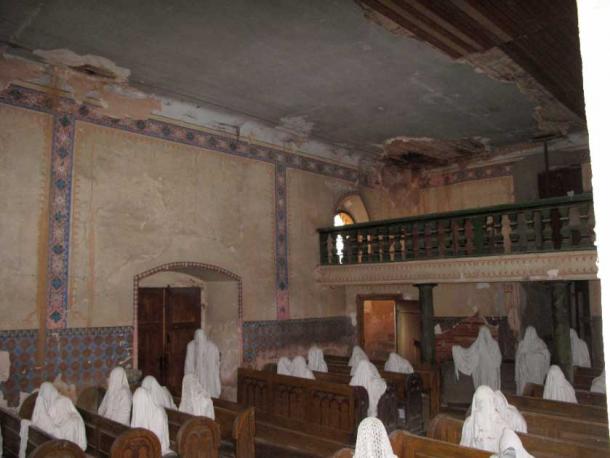
A recent art project to ‘install’ ghosts at Saint George’s Church, a haunted monument in the Czech Republic, has become a tourist attraction (Juandev / CC BY SA 3.0)
5. Gunnuhver in Iceland: The Haunted Hot Spring
It isn’t just old buildings that tend to be haunted. Gunnuhver is Iceland’s largest geothermal mud pool, and is located in the Reykjanes UNESCO Global Geopark. The entire area is a beautiful and terrifying collection of craters, lava fields, and massive hot springs. It is also haunted by the spirit of a long-dead witch.
Some locals believe that around 400 years ago, the peninsula Gunnhver is located on was home to a witch called “Gunna”. The locals suspected that she was a witch because inside her home was a cauldron that never stopped bubbling.
Gunna’s landlord was a man called Vilhjalmur Jonsson. When one day she failed to pay her rent, Jonsson responded by taking away her precious cauldron. Gunna was outraged and in retaliation, she carried out a starvation protest. Unfortunately, the witch wasn’t exactly popular, and the locals left her to die of starvation.
On the day of her burial, the men carrying her coffin noticed that it was oddly light. As her grave was being dug, the same men heard Gunna’s voice scream “No need deep dig, no plans long to lie”. She wasn’t joking. The next day Jonsson’s body was found in his home, bruised and broken.
But Gunna wasn’t finished. She continued to haunt the locals, terrorizing all that lived on the peninsula. Eventually, the desperate locals turned to a priest for help. The priest advised the locals to leave out a ball of twine with a loose end for Gunna to grab. As soon as she grabbed the loose end, the locals were told to roll the ball into the boiling hot spring, dragging her with it.
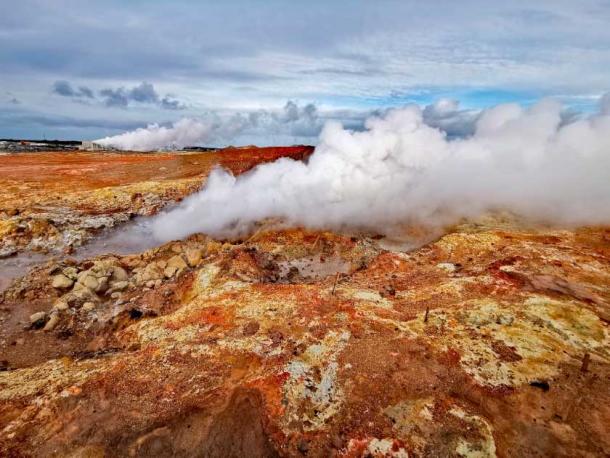
The Gunnuhver Geothermal Hot Springs are a natural marvel and local legend. Could a witch be trapped in the bubbling cauldron of the mud pools? (Dolf Van Der Haven / CC BY NC ND 2.0)
The logic behind the plan has been lost to time, but it is said to have worked. Locals believe that when she was dragged into the hot spring she was trapped there for eternity. The hot spring was then named after her as a warning.
While most believe that Gunna is truly trapped, some claim to have seen her either wandering the peninsula or grasping the edge of spring, trying to climb out.
6. The Forbidden City: China’s Most Haunted Monument
The Forbidden City in Beijing, China was built in 1420 and acted as the imperial palace and winter residence of the Chinese emperor from the Ming Dynasty through the end of the Qing dynasty in 1924.
Over its 600 years of history, the Forbidden City has seen a lot of deaths. With jealous concubines taking each other out, executions ordered by the emperor, and a great fire, there is no shortage of inspiration for ghost stories.
After parts of the city were opened up to the public in the 1940s, reports of ghost sightings within the Forbidden City skyrocketed. The most common report is of a ghostly woman dressed in white, who strolls the city grounds weeping. Other popular stories include ghost dogs stalking the city’s narrow streets and flute music playing in the dead of night.
While many of these stories became popular after 1940, the idea that the city is cursed goes much further back. The legend goes that the Forbidden City has been cursed ever since the Ming Emperor Yongle opened it in 1421.

Parts of the Forbidden City are now open to the public, but there are still many secrets, and perhaps some ghosts, lurking in this haunted monument (Imlane / Adobe Stock)
Around the same time the city was opened, legend says Yongle had over 2,800 people slaughtered in his harem while trying to suppress a sex scandal. The fact that he did so during the Chinese New Year and the city’s opening ceremonies is believed to have caused the curse.
A few years after it was opened, a fire tore through the Forbidden City, killing many of the people who lived and worked there. The hundreds of lucky charms that adorned the palace did nothing to prevent the disaster. Following the fire, Yongle fell into a deep depression, believing the fire to be his punishment. He never recovered and died in 1424.
The Forbidden City is often touted as one of the most haunted places in China. Every year, tourists flock to the site, and despite the fact that most of it is still locked away, many of them report seeing ghostly apparitions.
7. Leap Castle: A Terrifying Legacy
If reports are to be believed then Leap Castle, located in County Offaly, Ireland, is easily the most cursed place on this list. The castle’s history is so dark and so bloody that it makes Game of Thrones seem like a children’s bedtime story. Many castles claim to be the most haunted castle in the world, but Leap Castle should likely be at the top.
No one is quite sure when the main castle was built; estimates range from the 13th to 15th century, with around 1250 AD being the most likely. The castle was home to the feared Ely O’Carroll clan, who ruled the area mercilessly for centuries.
In 1532, the clan’s chief, Mulrooney O’Carroll, died and the clan was split over who should lead it. The two prime candidates were Teige O’Carroll and his older brother, Thaddeus. One day, while mass was being held in the castle chapel Mulrooney entered and stabbed Teige, who was a priest, in the back. Teige collapsed onto the chapel altar and bled out in front of the entire clan.
Ever since then, the chapel has been referred to as the “Bloody Chapel,” and Teige is said to haunt it to this day. At night, strange lights shine from the ruined chapel’s remaining window. But this isn’t the castle’s only ghost, not by a long shot.
In 1922, workmen found a secret passageway behind a wall in the chapel. It led to a dungeon where dozens of skeletons were found, as well as various wooden spikes. Above the dungeon was a trap door. The O’Carrolls had once used the trap door to drop unsuspecting guests onto the spikes. The castle is said to be haunted by the ghosts of these impaled guests.
The castle is also said to be the home to the ghosts of forty members of the McMahon mercenary clan, who were reportedly poisoned by the O’Carrolls during a celebration feast. Poisoning them was cheaper than paying them.
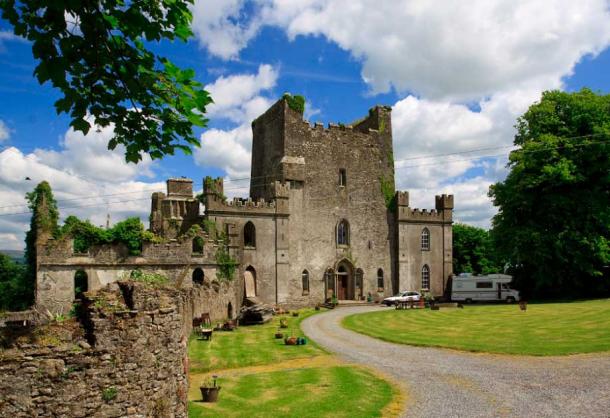
Leap Castle is now claimed to be a haunted monument, with the ghosts of the O’Carroll clan’s cruelty roaming the corridors. (Mike Searle / CC BY SA 2.0)
Conclusion
Whether or not you believe these sites are haunted likely depends on what your opinion on ghosts is in the first place. For every person who gets a chill at hearing these stories, there will be another person who will laugh.
At the end of the day, these ghost stories are harmless, and whether these sites are haunted or not doesn’t matter. We all love a good ghost story, and the tourists (and their money) these ghosts bring in are being used to keep these monuments maintained for future generations.